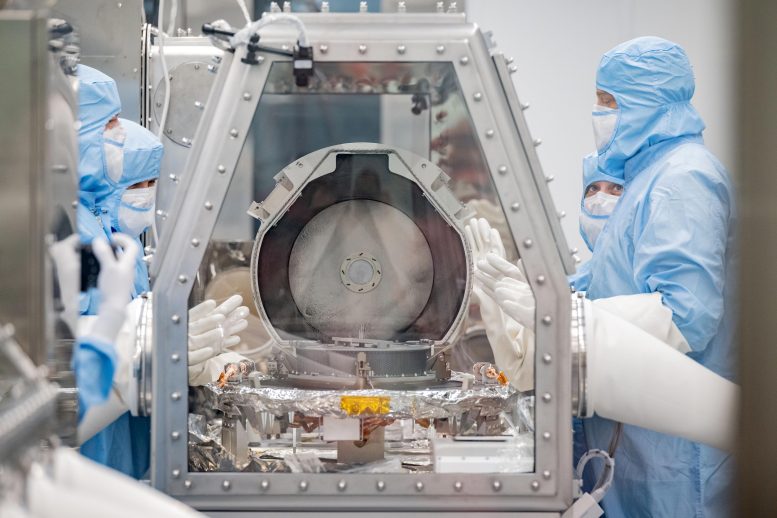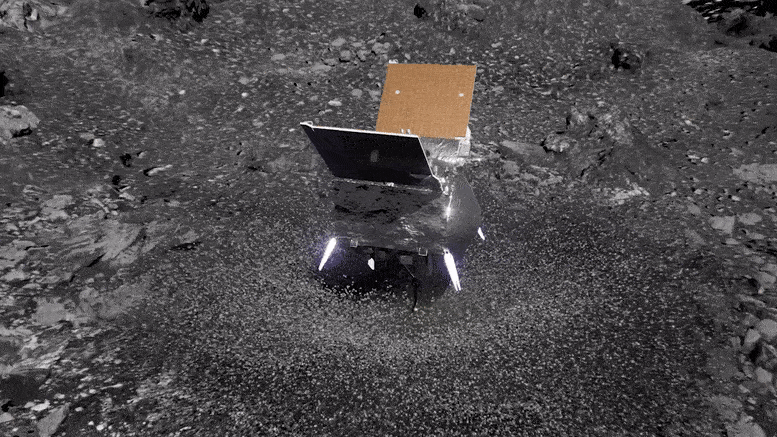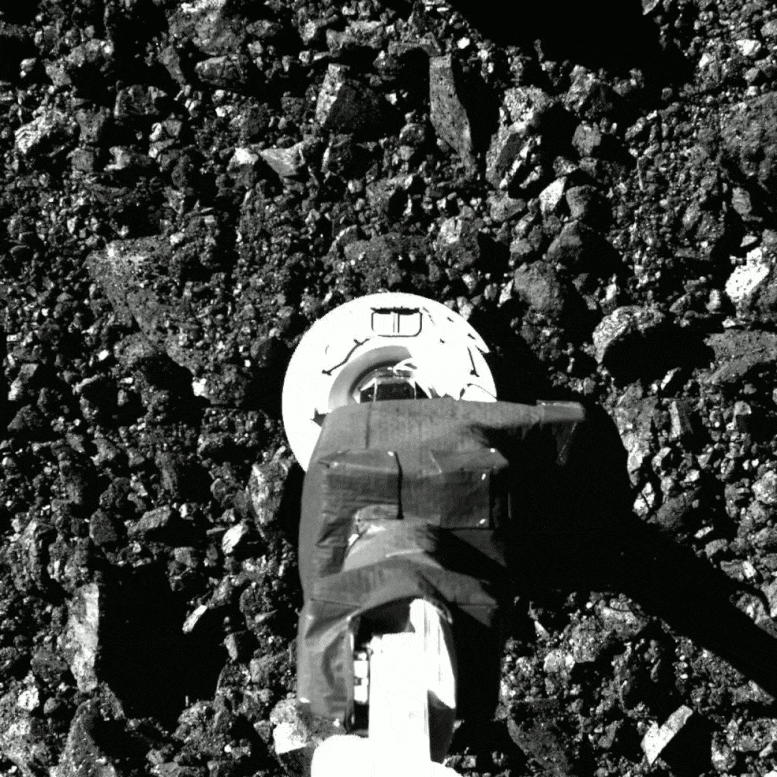
NASA curation team members along with Lockheed Martin recovery specialists look on after the successful removal of the sample return canister lid. Credit: NASA/Robert Markowitz
NASA’s OSIRIS-REx sample collection from asteroid Bennu exceeded expectations in material quantity, slowing the curation process. Advanced analysis methods are underway, with a more detailed examination planned for the coming weeks.
The initial curation process for NASA’s OSIRIS-REx sample of asteroid Bennu is moving slower than anticipated, but for the best reason: the sample runneth over. The abundance of material found when the science canister lid was removed earlier this week has meant that the process of disassembling the TAGSAM (Touch-and-Go Sample Acquisition Mechanism) head – which holds the bulk of material from the asteroid – is off to a methodical start.
Unexpected Findings
After the collection event on Bennu three years ago, scientists expected they could find some asteroid material in the canister outside the TAGSAM head when they saw particles slowly escaping the head before it was stowed. However, the actual amount of dark particles coating the inside of the canister lid and base that surrounds the TAGSAM is even more than they’d anticipated.
“The very best ‘problem’ to have is that there is so much material, it’s taking longer than we expected to collect it,” said deputy OSIRIS-REx curation lead Christopher Snead of NASA’s Johnson Space Center. “There’s a lot of abundant material outside the TAGSAM head that’s interesting in its own right. It’s really spectacular to have all that material there.”

Animation of NASA’s OSIRIS-REx spacecraft leaving the surface of asteroid Bennu after collecting a sample. Credit: NASA’s Goddard Space Flight Center/CI Lab/SVS
Analysis of the Sample
The first sample collected from outside the TAGSAM head, on the avionics deck, is now in the hands of scientists who are performing a quick-look analysis, which will provide an initial understanding of the Bennu material and what we can expect to find when the bulk sample is revealed.
“We have all the microanalytical techniques that we can throw at this to really, really tear it apart, almost down to the atomic scale,” said Lindsay Keller, OSIRIS-REx sample analysis team member from Johnson.
The quick-look research will utilize various instruments, including a scanning electron microscope (SEM), infrared measurements, and X-ray diffraction (XRD), to gain a better understanding of the sample.

Captured on October 20, 2020, during the OSIRIS-REx mission’s Touch-And-Go (TAG) sample collection event, this series of 2 images shows the SamCam imager’s field of view at the moment before and after the NASA spacecraft touched down on asteroid Bennu’s surface. Credit: NASA/Goddard/University of Arizona
The SEM will offer a chemical and morphological analysis, while the infrared measurements should provide information on whether the sample contains hydrated minerals and organic-rich particles. The X-ray diffraction is sensitive to the different minerals in a sample and will give an inventory of the minerals and perhaps an indication of their proportions.
“You’ve got really top-notch people and instruments and facilities that are going to be hitting these samples,” Keller said.
This quick-look science is a tool that will offer more data to researchers as they approach the larger pieces of sample for follow-up analysis.
Next Steps
Over the coming weeks, the curation team will move the TAGSAM head into a different specialized glovebox where they will undertake the intricate process of disassembly to ultimately reveal the bulk sample within.









Why has it been 3 years since the collection from the asteroid Bennu to begin analysis of the sample of mineral soil like material from the asteroid Benny. When will the public at large have access to the results if the soil/mineral substance material results?